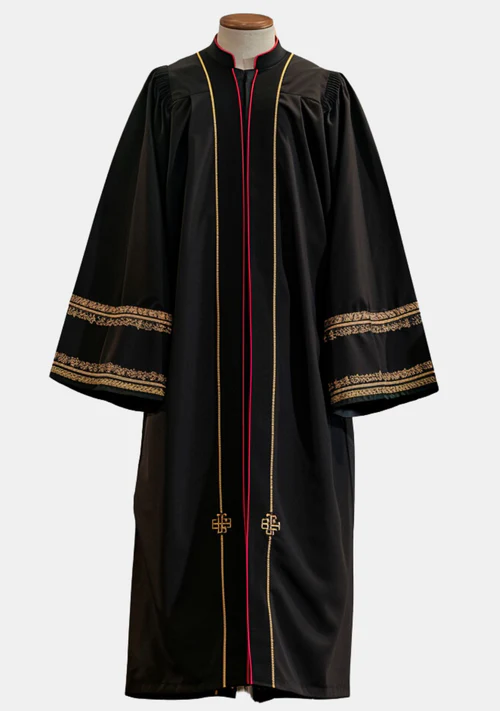When did Minister Robes for Women First Appear?

Strong 8k brings an ultra-HD IPTV experience to your living room and your pocket.
The history of minister robes for women is a fascinating journey through religious traditions, cultural shifts, and societal changes. From the earliest days of the church to the modern era, the evolution of women's minister robes reflects broader trends in both religious practice and gender roles. This comprehensive article explores the origins, development, and contemporary status of minister robes for women, under several headings.
1. Early Church and Women's Roles
In the early days of Christianity, the roles of women in religious services were often limited and largely influenced by cultural norms of the time. Women were expected to dress modestly, but there were no specific women's minister robes as we understand them today. Instead, women's attire was generally dictated by the broader societal standards of modesty and decorum. While early Christianity did have notable female figures such as deaconesses, their attire did not distinguish them as religious leaders in the way that male clergy were often robed. The development of specific clergy garments for women would come much later, influenced by broader changes in the role of women in the church.
2. Medieval Period and Monastic Influence
During the medieval period, women who took religious vows and joined monastic communities wore habits that served as a form of religious attire. These habits, though not women's minister robes in the sense of leadership garments, were significant as they marked a woman’s religious commitment. These garments were often simple, reflecting vows of poverty and humility, and were distinct from the everyday dress of laywomen. In some instances, women involved in liturgical roles within monastic settings might wear special vestments, but these were rare and not widely standardized. The concept of women's minister robes specifically designed for women in ministerial roles was still not prevalent.
3. The Reformation and Beyond
The Reformation brought significant changes to Christian practices and the roles of women within certain denominations. Protestant movements, particularly those advocating for a "priesthood of all believers," began to see women taking more active roles in religious life. However, it wasn't until much later that women's minister robes became more common and accepted. Some early examples of women wearing distinct religious attire can be traced back to Protestant sects like the Quakers, who allowed women to preach and lead congregations. Their attire was often simple and modest, reflecting their broader theological emphasis on simplicity and equality.
4. 19th and Early 20th Century Developments
The 19th and early 20th centuries saw an increasing number of women taking on roles within various Christian denominations. Movements such as Methodism and other revivalist traditions began to see women as preachers and evangelists, although the concept of women's minister robes was still developing. As more denominations began to formally recognize women's roles in ministry, there was a gradual move towards formalizing attire for women in these positions. This period marked the beginning of the creation of specific clergy garments for women, reflecting their growing acceptance and institutional recognition within religious hierarchies.
5. Mid-20th Century and Liturgical Reforms
The mid-20th century, particularly post-Vatican II, saw significant liturgical reforms across many Christian denominations. These reforms often included changes in liturgical attire, including the development of more formal and standardized women's minister robes.
In many Protestant denominations, the ordination of women became more common, necessitating the creation of appropriate attire. This period saw the introduction of robes designed specifically for women, taking into account both traditional elements and modern sensibilities.
6. Modern Era: Diversity and Innovation
Today, women's minister robes are widely recognized and come in a variety of styles, colors, and designs. Modern robes are often tailored to fit women more comfortably and are available from specialized retailers such as Eclergys, an online store that sells clergy apparel and clothes, including high-quality clergy garments for women. Many contemporary robes offer options for customization, allowing women to choose designs that reflect their personal style and the traditions of their denomination. This includes the use of different fabrics, colors, and embroidery, making each robe unique. With growing awareness of environmental and ethical issues, many suppliers of women's minister robes are now offering sustainable and ethically made options. This includes using eco-friendly fabrics and ensuring fair labor practices in the production of these garments.
7. Role of Eclergys in Modern Clergy Apparel
Eclergys is a leading online store that offers a wide range of clergy apparel, including women's minister robes. Known for their high-quality products, Eclergys provides robes that are both stylish and durable, catering to the needs of modern clergywomen. They offers custom and tailored options, ensuring that every robe fits perfectly and meets the specific requirements of the wearer. Their attention to detail and commitment to quality make them a trusted name in clergy apparel.
Eclergys prides itself on excellent customer service, providing support and assistance to ensure that every purchase meets the expectations of their clients. Their dedication to customer satisfaction is evident in the positive feedback from clergywomen who shop with them.
8. The Future of Women's Minister Robes
As the roles of women in religious leadership continue to evolve, so too will the designs and styles of women's minister robes. Future trends may include more innovative materials, greater personalization, and even the integration of technology to enhance comfort and functionality. The future of women's minister robes will likely see a greater emphasis on inclusivity, with designs that cater to women of all shapes, sizes, and backgrounds. This includes adaptive designs for women with disabilities and options that reflect diverse cultural heritages. Sustainability will continue to be a key consideration, with more designers and retailers like Eclergys focusing on eco-friendly practices. This includes using sustainable materials, reducing waste, and ensuring ethical production processes.
Conclusion:
The history of women's minister robes is a testament to the evolving role of women in religious leadership and the broader changes within society and the church. From the early days of modest attire to the modern, tailored, and often personalized robes available today, these garments reflect both tradition and innovation. As we look to the future, the continued evolution of clergy garments for women promises to bring even greater diversity, inclusivity, and sustainability to this important aspect of religious life. For high-quality, custom, and tailored options, Eclergys stands out as a premier provider, supporting clergywomen with apparel that meets the highest standards of quality and design.
Note: IndiBlogHub features both user-submitted and editorial content. We do not verify third-party contributions. Read our Disclaimer and Privacy Policyfor details.


